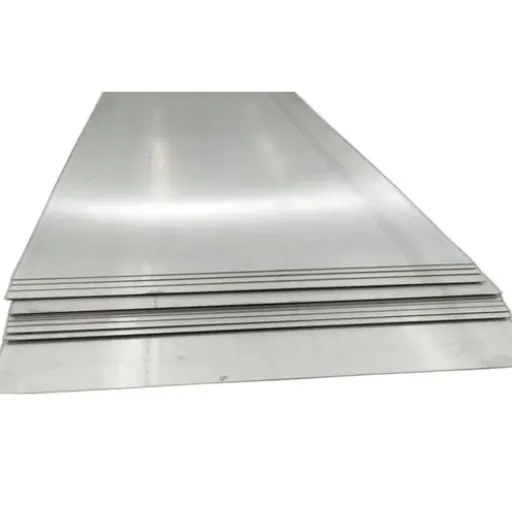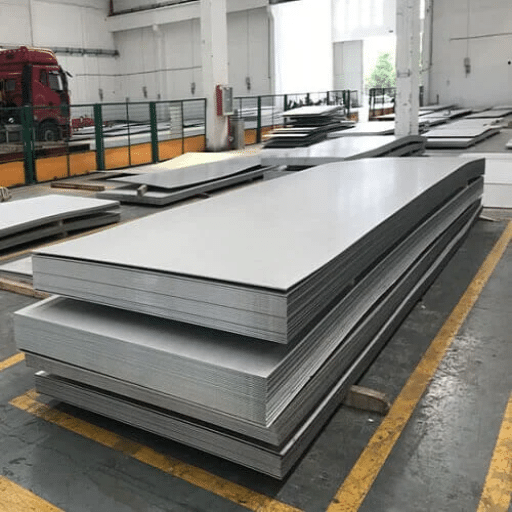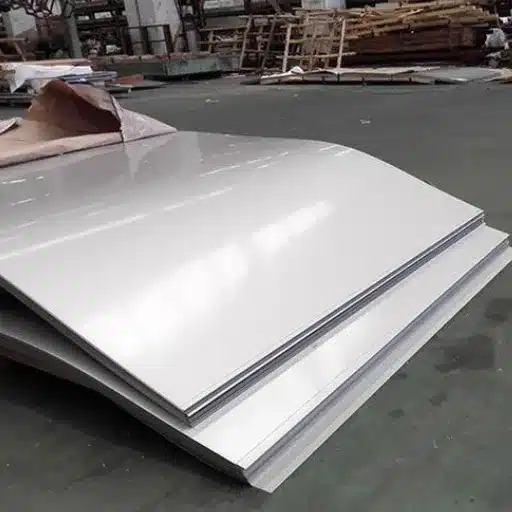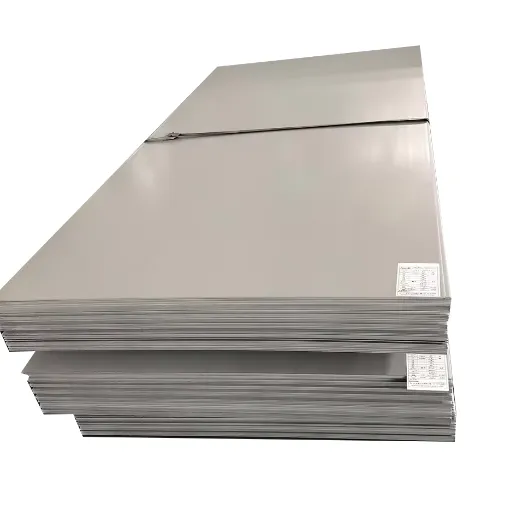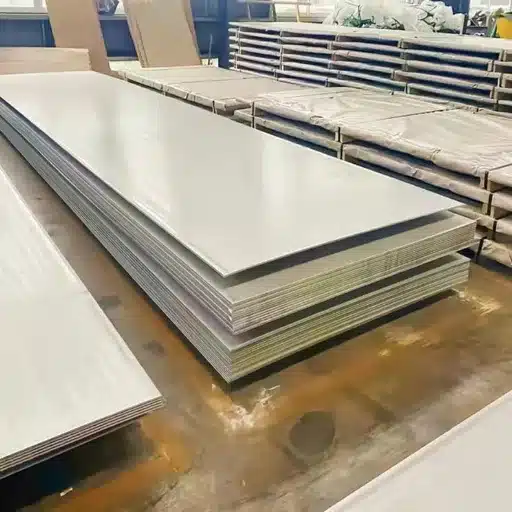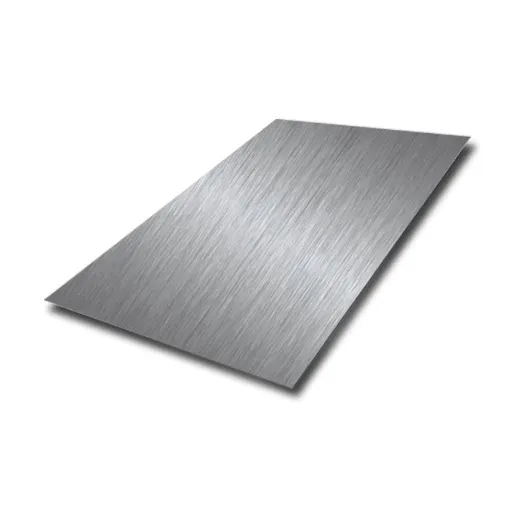This topic has two highly relevant aspects: the thickness of sheet metal gauge and the material selection for your job. With its delicate balance between strength and versatility, 18 steel has become one of the most popular sizes in the industry. What does 18 gauge actually mean, and how does this system work? This article will shed light on the bewildering number of metal thickness measurements, explain the gauge system, and expound on the reasons for the widespread use of 18 gauge steel. Whether you’re engaged in woodworking or industrial fabrication, or simply interested in materials, this guide will provide you with all the essential information needed to make informed choices. Here we go, to see if steel gauge thickness affects the success of the project you are working on.
Introduction to the Gauge System

The gauge system is a particular standard of measurement for metal sheet thickness. It is different from most measurement systems because it gives smaller numbers for thicker materials and larger numbers for thinner materials. For example, if an 18 gauge steel sheet is thicker than a 20 gauge steel sheet, then the system helps these materials instantly be compared with respect to thickness. This gauge system was created to assist in the easy comparison of the thicknesses of metals. It found usage in industries like construction and manufacturing. It is also important to be aware that the thickness of a gauge can vary slightly depending on the material under measurement-factors that are taken into serious consideration in ensuring we are selecting the proper material for our projects.
What is the Gauge System?
The gauge system is a standard measure to indicate the thickness of sheet metals, wires, and other materials. It emerged in the 19th century, aiming to simplify picking materials for various uses across industries. Each gauge number stands for a certain thickness, with a smaller number implying a thicker material and a larger number implying a thinner material. For instance, 10 gauge steel sheet is much thicker than 20 gauge in steel. By virtue of slight variations in the actual thickness in inches or millimeters for the type of materials, standards between gauge and thickness might vary slightly, notably in steel, aluminum, and copper. This system finds significance mostly in construction, automotive manufacturing, and metal fabrication, where material thickness plays a huge role in the strength and application of the structure.
History and Evolution of Gauge Charts
Dating to the early industrial era, the gauge chart system became a necessity for standardization, efficient manufacturing, and accurate material processing. Originally intended for wire and sheet metal, these charts were made to ensure uniformity in the thickness of measurements when developing parts for machinery, tools, and structures. Later, the system grew to include various materials such as steel, aluminum, and copper, each one having different standards owing to differences in density and weight.
Today, modern iterations of gauge charts promote more precision and usefulness by incorporating advanced measuring technology with global industry standards. These charts present data in line with both the imperial and metric systems, rendering them accessible to manufacturers and traders worldwide. Their function now in minimizing raw material wastage and optimizing design produces the best results across the whole range, including aerospace, automotive, construction, and consumer goods. The history of the development of gauge charts and their refining into the present day tells much about the balance between tradition and innovation in industrial practice.
Common Misconceptions for Those Unfamiliar with the Gauge System
One widely held misunderstanding is that gauge measurements are the same in any industry. While more or less consistent across a field of application—such as wire or sheet-metal gauges, for instance—their use can certainly vary according to either the particular material in question or a regional praxis. Less widely held, but also mistaken, is the notion of a directly proportional relation between gauge number and thickness: one often assumes that a higher number always means a thicker material. In fact, in most cases (and especially in metal and wire), the opposite is true; thus, ironically, a higher gauge number implies thinner dimensions. And some presume that gauge systems are a relic of the past, and have given way to the digital tools and computer software of today, yet gauge measurements are still at the forefront of many industrial applications that rely on results established by these measurements for decades. Being familiar with these subtleties will give you an accurate application and measurement throughout various other domains.
Understanding 18 Gauge Steel
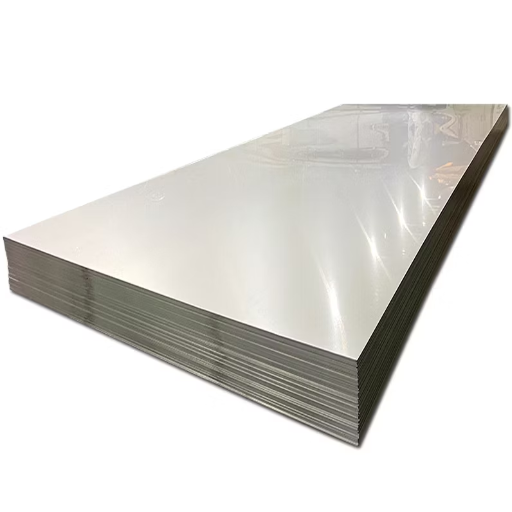
18 gauge steel is a 18-gauge thickness of steel used in manufacturing and construction. For steel, 18 gauge thickness is about 0.0478 inches (1.214 mm). It is moderately thick, making it durable yet flexible, for use in inner paneling for automotive, appliances, and metal roofing. Fortified and allowed to be cheap, hence it would be used in many different sectors.
Definition and Thickness of 18 Gauge Steel
18 gauge steel, having a thickness of around 0.0478 inches or 1.214 millimeters, finds application in industrial as well as daily-use products because of an excellent compromise between strength, versatility, and cost. This thickness maintains durability through active abrasions, but at the same time keeps the steel light so that it can be handled and fabricated with ease. These include use as automotive components, such as body panels, where precision and resilience are emphasized; meanwhile, in household appliances, including washing machines, refrigerators, etc., a refined finish with durability over time is sought. It also finds widespread use in metal roofing and structural work where the material must outrank over its degrading agents in environmental changes. Its versatility and cost-effectiveness have ensured its place as a chosen material across many sectors.
Inches vs. Millimeters: 18 Gauge Conversion
Talking about 18 Gauge thicknesses, something that is very important is to understand just how to convert between inches and millimeters for an accurate perception of the physical dimension of the material. For steel, 18 Gauge is nearly 0.0478 inches thick, that is, 1.214 millimeters. Likewise, for aluminum, thickness will vary due to its special characteristics; it is about 0.0403 inches or 1.024 millimeters. These measurements thus indicate that when the gauge numbers are specified, it is essential to indicate the type of materials being used, as the conversions can vary depending upon the material utilized. This understanding of actual dimensions becomes very critical in applications where dimension and performance of the material are of paramount importance.
Comparison of 18 Gauge Steel to Other Gauges
|
Parameter |
18 Gauge Steel |
16 Gauge Steel |
20 Gauge Steel |
|---|---|---|---|
|
Thickness (approx.) |
0.0478 inches |
0.0598 inches |
0.0359 inches |
|
Strength |
High |
Very high |
Moderate |
|
Durability |
Excellent |
Superior |
Lower |
|
Weight |
Moderate |
Heavier |
Lighter |
|
Flexibility |
Less flexible |
Least flexible |
Most flexible |
|
Application |
Household and commercial use |
Heavy-duty structural use |
Light-duty applications |
|
Cost |
Affordable |
Higher |
Lowest |
|
Corrosion Resistance |
Reliable |
Very reliable |
Less reliable |
|
Ease of Workability |
Manageable |
Difficult |
Easy |
|
Common Uses |
Appliances, roofing |
Construction, machinery |
Ducts, crafting |
Applications of 18 Gauge Steel
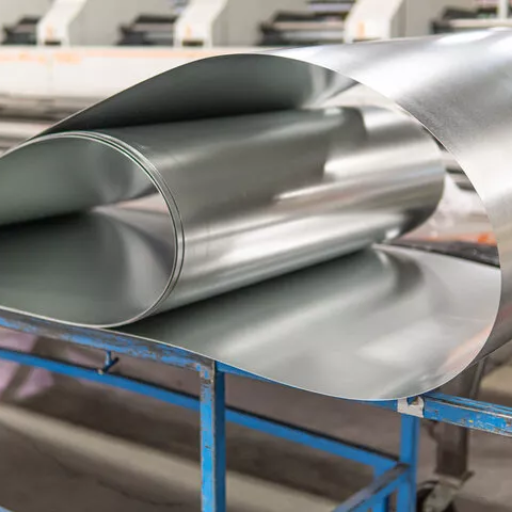
- Appliances
- Usually applied in the production of heavy household appliances like refrigerators, washing machines, and ovens.
- The medium thickness grants great strength yet maintains a reasonable weight.
- Roofing and Siding
- Mainly used in residential and commercial buildings as roofing and siding panels.
- Reliability in corrosion resistance translates to the long life of the panels and low maintenance in due course of time.
- Automotive Parts
- Used for manufacturing certain automotive parts like body panels and interior reinforcements.
- This thickness is easy to work with, allowing precision in forming complex shapes.
- HVAC Systems
- Used mostly for ducts and other components of heating, ventilation, and air conditioning.
- Lightweight and easy fabrication lure toward fast installation.
- Furniture
- Found in metal furniture comprising office desks and chairs, it offers a sturdy yet lightweight construction.
- Moderate cost renders it an economical choice for mass production.
- Crafting and Decorative Items
- It is popular among art workers for shaping decorative items, lighting, and custom designs.
-
Its flexibility can be applied to creativity in small-scale projects.
Use in Construction
Aluminum stands out in light of modern construction works for the qualities of durability, easy weight, and resistance to corrosion. It, therefore, gets used inside the construction elements for window frames, roofing systems, and curtain walls. These finishes contribute to their fire safety standards being non-combustible, while high reflectivity exploits energy conservation by cutting down on heat gain on buildings. Along with that, aluminum recycling makes it a favorite in green construction processes, lowering the environmental impact while maintaining quality. Now, it has been furthered with new advancements like 3D printing for more challenging architectural expressions and faster building.
18 Gauge Steel in Manufacturing
Being a 18 gauge steel, it is a very versatile steel with a wide range of applications in manufacturing, moderately priced in strength, durability, and workability. It is about 0.0478 inches thick, in a way that presents a good balance between the sturdy and workable structure of this steel, ideally suitable for automotive parts, industrial equipment, and construction components. It is found to be wear-hard and deformation-resistant, excellent in high-stress environments, and it is relatively easy to work with (cut, weld, and form) throughout many production procedures. Such coatings that promote corrosion resistance-e.g., galvanizing-improve further its life span and performance under testing conditions. With new manufacturing techniques under consideration, 18 gauge steel remains critical in a situation that requires precision and durability.
Automotive Applications and Benefits
- Body Panels
- 18 gauge steel is generally used to manufacture vehicle body panels due to the high resistance to dents and impacts.
- It has the very thickness that is required to maintain strength but at the same time being light, thus further aiding fuel economy.
- Structural Components
- Used in structural areas of importance for safety such as door beams, roof structures, and chassis reinforcements.
- High tensile strength maintains vehicle integrity during collision or stress.
- Corrosion Resistance
- It has superior resistance to rust and environmental damage when applied with galvanizing or other protective layers to extend vehicle life even in severe climates.
- Manufacturability
- The malleability allows for precision shaping and fabrication, thereby being very accommodating for intricate design and complex automotive components.
- Welding and assembly processes that are widely accepted are well compatible with it and help in speeding the production process, thus drawing down the expenses in total manufacturing.
- Cost Efficiency
- 18-gauge steel is more cost-effective than other high-performance materials, such as aluminum or special alloys, while maintaining good performance characteristics.
- Also, recycling of this steel saves a lot of money and makes it environmentally friendly for use in car manufacturing.
Benefits of Using 18 Gauge Steel
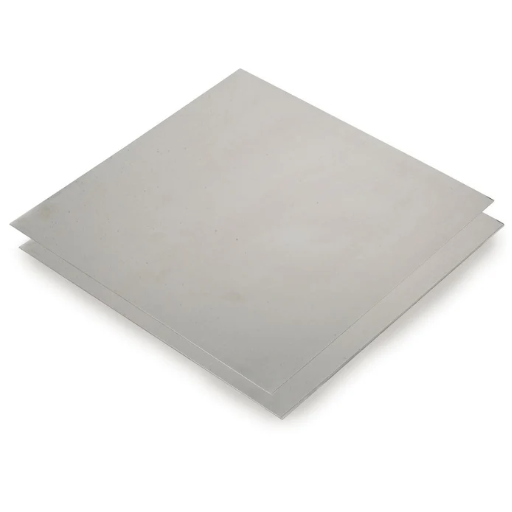
- Strength and Durability
- 18 gauge steel possesses the highest tensile strength, implying that it is highly resistant to damage or deformation.
- With tensile strength overhead 50,000-60,000 psi, it assures its reliability and safety in the most demanding uses like automotive chassis and structural components.
- Versatility
- Its thickness of 0.0478 inches (1.214 mm) makes it a very transferable medium for almost any design or purpose, thereby applied in numerous industrial and automotive uses.
- Most processes for welding, cutting, and machining are perceived as serving the maximum customization.
- Corrosion Resistance
- Once galvanized or coated, 18 gauge steel resists rust and corrosion very well, thus extending the life of parts exposed to severe conditions.
- Thus, particular consideration is given to construction and transportation classes, in which materials suffer environmental attacks.
- Weight Optimization
- 18-gauge steel best balances strength and weight, providing reasonably high load-bearing capacity without being unduly heavy.
- In weight terms, 18-gauge steel is lower than thicker gauges; with this, its use in automotive applications aids the vehicle in better fuel consumption and decreased transportation costs.
- Cost Efficiency
- Being thinner, thus lighter compared to heavier gauges, less material is used to cut down manufacturing cost.
- This gives a cost-effective solution for industries that will be trying to save on relevant expenditures without compromising on quality.
Strength and Durability
The more diminutive thickness of thin-gauge steel is just enough to impart substantial strength and durability today because of material engineering advances. Through modern manufacturing techniques, those whose skill sets include special alloyed compositions and heat treatments improve the condition of the material against wear, corrosive agents, and mechanical stresses. So the juxtaposition between the two assures thin gauge steel to perform well under stressful situations witnessed in construction, automotive, and household appliances industries; maintain structural integrity under fairly oppressive conditions; and hold a heavy preference for those industries where lightweight yet rugged materials are preferred.
Flexibility in Metal Fabrication
Metal fabrication offers more of a great platform for adaptability that embraces applications in different fields. Being able to incorporate newer technologies like laser cutting, CNC machining, and 3D printing allows fabrication manufacturers to do several customizations with very intricate designs. Such technology creates an environment where industries can put together metal products for industries according to their needs-once in lightweight metal parts to aerospace or strong frames for heavy machinery. Statistical figures tend to support the diversification of fabrication methods to meet the ever-growing demand for more innovative and efficient solutions. Such innovation not only increases efficiency in fulfilling production targets but also promotes sustainability through the efficient use of materials and minimization of waste.
Cost-Effectiveness and Availability
Practical Tips for Working with 18 Gauge Steel

- Use the Right Tools: To trim metals of thinner gauge, select tools made for such thin metals, such as snips, shears, or maybe even a plasma cutter, which will give neat cuts without distorting the metal.
- Drilling Holes: Use a sharp-made, HSS drill bit for drilling holes in 18 gauge steel. Apply steady pressure and rotate speed.
- Prevent Warping: While cutting or shaping, steel must be held firmly by means of clamps or a bench vice so that it cannot move or bend.
- Edge Finishing: After cutting, file or use a deburring tool to smooth the edges to remove any sharpness and further ensure safe handling.
- Avoid Heat Distortion: To weld, keep short welds and allow the weld to cool between passes to keep distortion low in such thin material.
- Protective Measures: Take safety precautions such as wearing gloves and eye gear whenever handling 18 gauge steel so as to protect yourself against injuries from sharp edges and fine debris.
Best Practices in Metal Fabrication
- Laser Cutting for Accuracy: Because of laser cutting technology, cuts are made with ultimate precision, especially for those intricate or patterned cuts. This process will leave very little wastage and maximum precision with smooth edges.
- CNC Machining: CNC machining is essentially for repeatable results when complex shapes or tolerances are involved. The automation process tends to reduce human error and makes production more efficient.
- Material Selection: Choose the materials best suited for the nature of the product’s end use. For instance, stainless steel offers very good corrosion resistance, while aluminum provides a poor corrosion-resistant but lightweight alternative.
- Proper Adhesives and Fasteners: When joining metals, the selection of an appropriate adhesive or mechanical fastener will guarantee strength and durability on the end product, mainly in a load-bearing structure.
- Quality Control Checks: Implement systematic inspections during fabrication and after fabrication to catch defects early. Non-destructive testing may be used in the verification of structural integrity, e.g., ultrasonic or X-ray testing, without damaging the product.
Tools and Techniques for Handling 18 Gauge Steel
With a series of precision instruments and processes, one can make clean cuts and properly shape 18 gauge steel without inflicting injury to the materials. The right quality aviation snips are essential to cut smooth to thinner sheet metals, such as the 18 gauge steel. Where the job demands extra levels of detail or quantity, electric and pneumatic shears are the next most effective methods, one can cut faster and cut more consistently.
Bending 18 gauge steel necessitates the use of metal brakes or bench brakes that exert controlled force to properly bend without distortion or cracking. The adjustable model is an advantage while working with different angles and lengths. Other tools involved in working with 18 gauge steel include welding, for which MIG welding is commonly used owing to its capability to produce clean and strong joints efficiently.
Marking tools, such as a scribe or laser guide, should be applied to maintain accuracy at every stage in laying out before cutting or forming. Properly preparing the surface, including cleaning and deburring, will ensure the proper execution of cuts and welds. With the proper guiding methods, handling 18 gauge steel could be made easier, hence producing professional results in any undertaking.
Real-World Case Studies and Applications
The 18 gauge steel is showcased in numerous real applications, cutting across varied industries. Along with disjointments, 18 gauge steel is very much used by the automotive industry for body panels that, from a strength-to-weight ratio perspective, assure durability and fuel efficiency. Furthermore, the material is placed at architectural assignments for interior and exterior strikes and specialty staircases or decorative paneling as initiated by ease of fabrication and wear resistance.
Another good case comes from the furniture manufacturing sector where 18 gauge steel is often used as a structural framework for various chairs, tables, and shelving units. Manufacturers tend to lean on the advantage of this gauge of being workable and supportive for detail, so as not to compromise on stability.
Reference Sources
-
“Modelling and analysis of step response test for hydraulic automatic gauge control”
- Key Findings: This study explores the relationship between steel rolling speed and sheet thickness, focusing on surface quality. It uses predictive control methods to optimize gauge control.
- Read more
-
“RSW junctions of advanced automotive sheet steel by using different electrode pressures”
- Key Findings: Investigates resistance spot welding (RSW) of automotive steel sheets, emphasizing the relationship between nugget diameter and steel strength.
- Read more
-
“Investigation of epoxy powder coated galvanized steel substrate through electrostatic powder coating system”
- Key Findings: Examines the impact of coating thickness on adhesion and quality of galvanized steel substrates.
- Read more
Frequently Asked Questions (FAQs)
Q: What is the thickness of 18 gauge steel in inches?
A: 18 gauge steel is equivalent to 0.0478 inches in thickness. This specific gauge falls within the standard gauge system used in metal fabrication. Understanding the thickness of sheet metal is crucial, especially when selecting materials for various projects. When working with sheet metal, you may encounter a gauge conversion chart that helps you understand the differences between standard and metric measurements. For instance, in galvanized steel, the thickness can slightly vary due to the coating process. Always ensure that the metal meets the required dimensions for your specific application.
Q: How does the gauge system work for sheet metal?
A: The gauge system is a standardized method of measuring the thickness of sheet metal, where a higher gauge number indicates a thinner piece of metal. For example, 18 gauge sheet metal is thicker than 20 gauge. Different gauge systems may use varying metrics and measurements, such as inches or millimeters, which can lead to confusion. To avoid any discrepancies, it’s advisable to refer to a gauge conversion chart when comparing metal types. Additionally, understanding the actual thickness of sheet metal is essential for applications in construction and metal fabrication. Knowing the specific gauge helps in selecting the right sheet metal for your project.
Q: What is the difference between galvanized steel and mild steel in terms of gauge thickness?
A: Galvanized steel is coated with a layer of zinc to prevent rust and corrosion, which may affect its overall thickness slightly compared to mild steel. For instance, while both 18 gauge galvanized steel and mild steel have similar thicknesses, the galvanized coating can add a small amount to the overall dimensions. When considering gauge thickness, it’s important to account for this added layer, especially in metal fabrication projects where precise measurements are crucial. Always refer to a sheet metal gauge chart to ensure you understand the specific differences in thickness for various metal types. This knowledge is vital when selecting the right materials for durability and strength in your applications.
Q: How can I determine the actual thickness of sheet metal?
A: To determine the actual thickness of sheet metal, you can use a caliper or micrometer to measure it directly. This is especially useful when working with different gauge systems, as the gauge size may not always accurately reflect the metal’s thickness. Many manufacturers provide specifications that detail the thickness of each gauge, which can be referenced in a sheet metal gauge chart. Additionally, utilizing a gauge conversion chart can help you understand how different systems compare, whether in standard or metric measurements. It’s important to ensure that the metal meets the required dimensions for your specific project, especially in applications where precision is key.
Q: What are the applications of 18 gauge aluminum in metal fabrication?
A: 18 gauge aluminum is often used in various metal fabrication applications due to its balance of strength and weight. This thickness, approximately 0.0403 inches, makes it suitable for projects requiring durability without excessive weight. Common applications include manufacturing enclosures, automotive parts, and decorative items. When working with aluminum, it’s essential to understand its properties compared to steel, as aluminum is more resistant to corrosion but may require different handling techniques. Always refer to a gauge conversion chart when switching between materials to ensure you maintain the right specifications. This will help you achieve the desired results in your fabrication projects.

